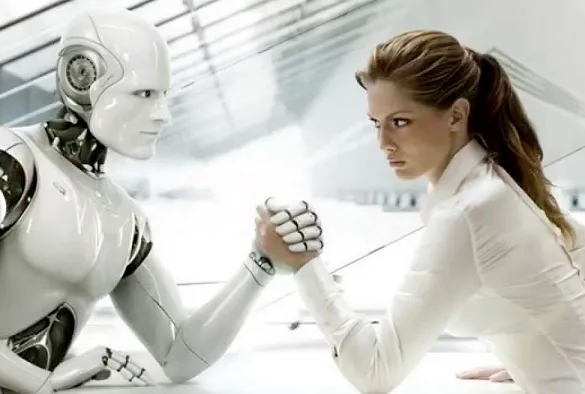
Artificial Intelligence (AI) which is an area of technology that stresses on the creation of intelligent machines that can think and work better than humans. In AI research, knowledge engineering plays a very fundamental role. If exposed to the right environment and given enough information machines can think, act and react like humans. It must be given the access to objects, categories, properties and how they are interrelated in order for knowledge engineering to be implemented. Making the machine understand the way humans think (common sense, reasoning and problem-solving) is a very uphill task. Machines should be able to recognize different patterns in streams of output without any supervision. Technology experts have predicted that AI is going to be in demand in the near future. It is predicted that it will be bigger than all of the human technology revolutions and it is going to replace humans in the workplace.
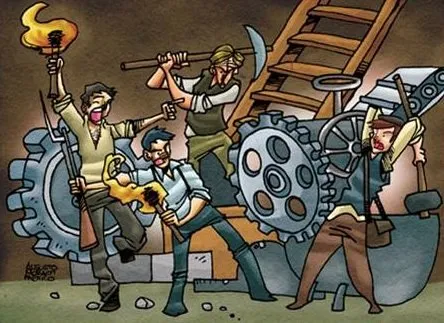
Last weekend I came across an article that stated that Artificial Intelligence has taken over and it was termed as the 'Luddite conspiracy'. Luddite is a word that was discovered in the textile industry in the 19th century. During that time the first set of employees had the experience of being replaced by the automated system. The workers refused to give up and they gave themselves the name 'Luddites' and they fought against the machines.
In October 2016, law enforcement agents made use of a robot to kill a Dallas sniper that killed five law enforcement agents. This is the first example of how a robot can cause fatal injuries. When trying to diffuse a bomb, robots are necessary and they are used by law enforcement agents. They are also used to conduct surveillance by SWAT and other relevant law enforcement agencies. Robots have also been used to locate assailants and have been used in hostage negotiations without the use of any deadly force. The Modular Advanced Armed Robotic system was recently launched and people are under the impression that these robots may be used to kill innocent people someday.

Daren Acemoglu and Pascual Restrepo both economists of MIT and Boston University respectively conducted a study on whether we should be concerned about the takeover of robots. Their research was on the focus of how industrial automation affected the US labor market between 1990-2007. The findings from their research was that with every new automation system added there was a reduction of employment between 3-6 workers and the salary dropped to 0.25-0.5%
The main concern is whether robots are going to be substituted for humans or is it going to compliment them thereby increasing profit. Acemoglu and Restrepo's findings support the argument that they substitute humans. Statistics by the International Federation of Robotics estimates that there are between 1.5-1.75 million industrial robots that are fully operational and they believe the number will have doubled by 2025. Automotive companies make use of industrial robots and this results in 39% of robot usage in the US. This automation has taken its toll on the employees of Americans Midwestern car capitals.
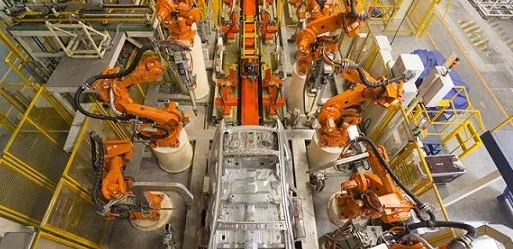
Amazon, one of the biggest online retailers in the world replaced humans with tens of thousands of robots working across 10 of its US warehouses. Amazon stated that the benefits of replacing humans with machines were a very simple decision. Since robots don’t form associations, get injured or sick or require any form of payments it was an easy decision to switch. Amazon came up with a 'picking challenge' between robots and humans. The idea was to see if robots can randomly grab an item from the shelf and put it in a bathtub. The company has about 50,000 employees in its warehouses and it wanted to compare if the robots can do the same jobs as humans. During the challenge, a Berlin robot was able to complete ten of the twelve tasks it was presented with, this was viewed as a success. After this experiment, the company made use of over 15,000 robots and they are expected to get more robots in the future.
Henn-na is a new hotel in Japan and it uses robots to check people in and out of their rooms. The robotic front desk representative can converse with you in either Japanese or English and the robots have been designed to take reservations of guests, show the guests to their rooms and adjust the room temperature to the preference of the guest. While in the room the guests can make use of voice commands to change the lighting and make inquiries about the time and weather. Many technology advanced restaurants make use of these tablets to take orders of their guests thereby replacing the job of a waiter or waitress. In some restaurants it enables people to pay thereby eliminating the need for cashiers.
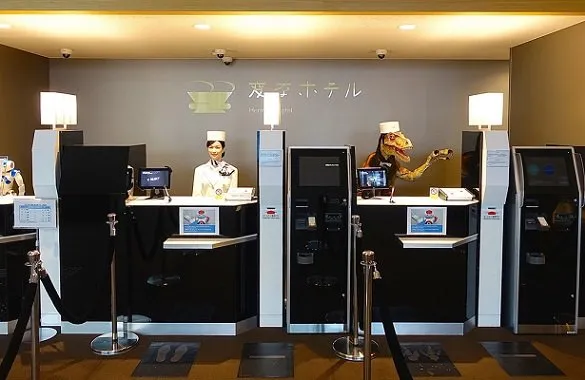
In the medical field, robots have also replaced some humans, machine-to-machine interactions and distant monitoring sensors have eliminated humans and the automated processes have become very common in the health care sector. There are sensors recording vital signs and electronically transmitting them to medical doctors for instance, people that have heart-related issues have monitors attached to them that take their blood pressure, blood oxygen levels, and their heart rates. These readings are transmitted to the doctor and he/she can then change the medications as the readings are transmitted. Health devices have been designed to take biological, chemical or physical processes and administer a drug or intervene based on the readings taken. These help the affected patients keep a healthy lifestyle. 'Point of Care' technologies prevent people from going to emergency rooms and hospitals and it still provides them with the latest therapies. Monitors can be implanted into a patient to help monitor symptoms and treatments. For instance, pulmonary artery measurement systems have helped to drastically reduce the risk of heart failure hospitalization. They have been designed to monitor heart arrhythmia and catch other warning signs. Machines are also being incorporated into the health care industry in different ways and in some instances 'rehabilitation robots' have been designed to help people with certain responsibilities. Service robots help people to customize their treatment and help them handle health, safety, and mobility issues. Companion robots are designed to help improve the quality of life through communication and social interaction. Houses that have elderly people can have robots that will help to make their daily living much easier and also improve on their medical treatments.
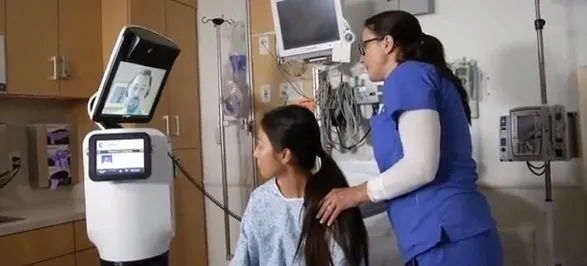
At the 2017 Annual meeting of the Association for Research in Vision and Ophthalmology (ARVO) in Baltimore, Maryland, surgeons put forward a study that described how they were the first to effectively use a remote-controlled robotic system inside the human eye during an operation. The research was carried out using 12 patients that were in dire need of a retinal surgery and they placed them in randomized clinical trials. Half of them were placed with the robot, while the remainder were surgically operated on by humans. The results were as followed; the half that were operated on by humans, five out of them had retinal micro-hemorrhaging while the other half had only two cases.
McKinsey Global Institute published a report in January 2017 and it stated that 60% of jobs can be automated by 30%. Although some of the jobs might be given to robots they are not completely there to replace humans. With the massive influx of robots, it might not come overnight rather it will steadily creep into our society before we realize our managers amd supervisors in our work place are robots. Many robots have been designed to think like humans and it would not be a surprise if robots begin to head companies. This can be a good thing because it is not biased in its decisions when giving out promotions in the workplace. Motivations in the workplace might improve when it is a robot that is monitoring the employees’ performance. The increase in technology has made more companies rake in more profits due to the decrease in employees. For example, 'Google' is worth $495 billion but it has about 62,000 employees – less than a tenth the size of AT&T’s workforce in the 1960s. In many industries, technology has replaced human labor and this has taken a serious toll on the average jobs and salaries.
The book The Robot Economy: Ready or Not, Here it Comes” was published by JP Sottile and it talks about how the fourth industrial revolution has begun and how we should be ready. According to Sottile, he envisions that 47% of all jobs in the US may be lost due to automation in the next two decades and it will cause a fast decline in the manufacturing base and consumption-driven economics. He also stated that in the future, artificial intelligence replaces administrative workers, automated kiosks that help to dislodge food service workers and driverless vehicles will remove the livelihoods of over 10 million Americans.

The US labor force has followed the trend of the existing technological advancements for instance, the agricultural technology gave birth to the farming industry while the industrial revolution moved people into the factories and the globalization and automation brought them out again and this has caused a rise to a variety of services. Even with the ever-changing dynamics, jobs have always been on the rise. Economists say that the new labor force, which is mechanical labor in nature will displace many people thereby causing unemployment.
The idea that machines will make our problems easier is entangled with the apprehension that we might be displaced from our jobs. So who knows, one day you may walk into your office and find out your boss is a robot and you are just a number! Can your job be replaced by a robot?
(The opinions expressed in this post do not necessarily reflect my personal views).
These are topics I research and I find really interesting! Thank you for reading :)
I hope you enjoyed. Please Upvote, Resteem, and Follow me @road2wisdom

